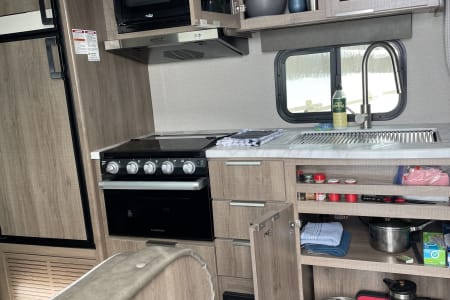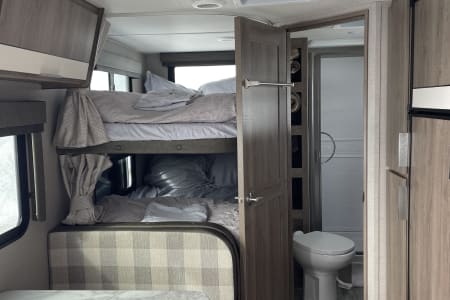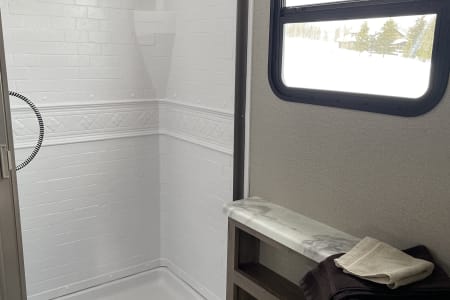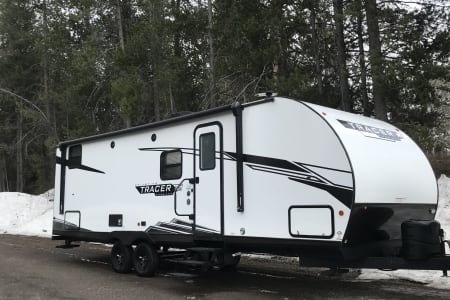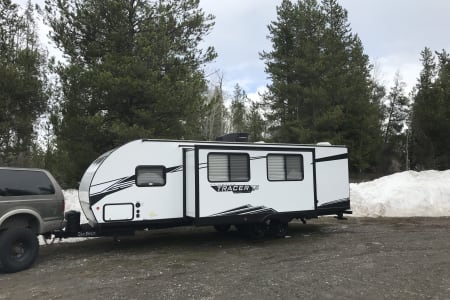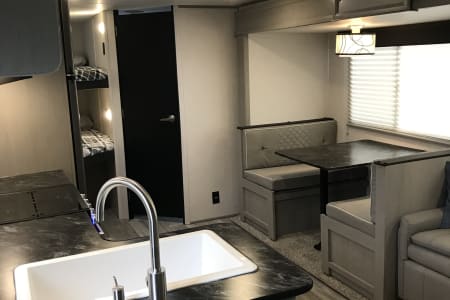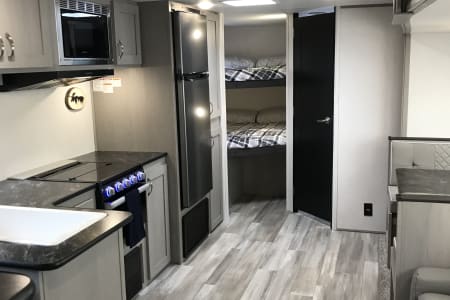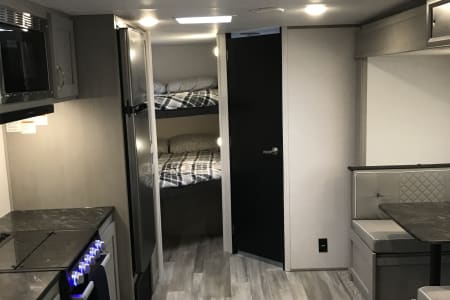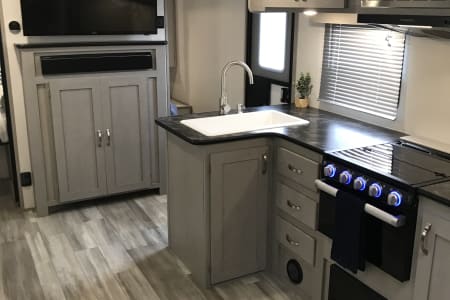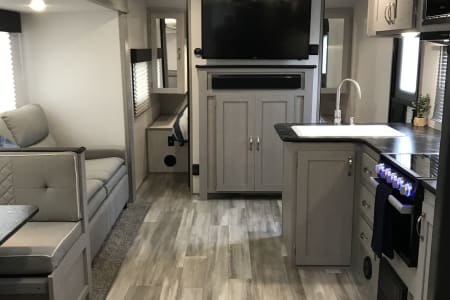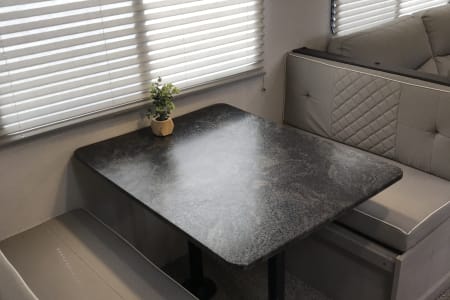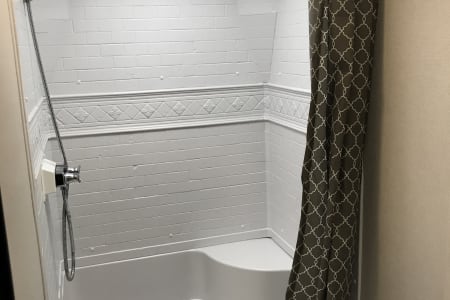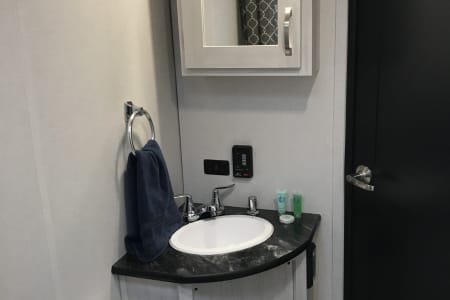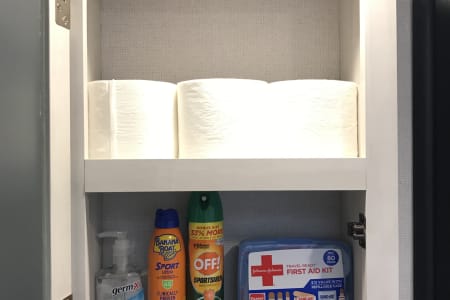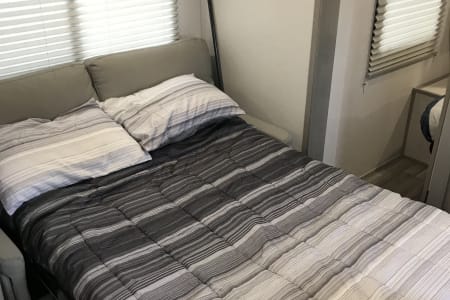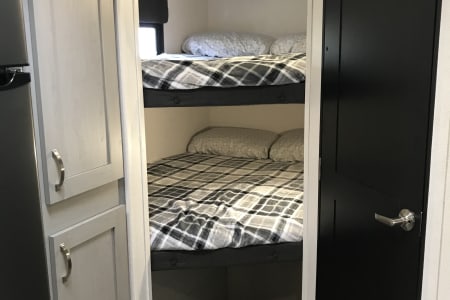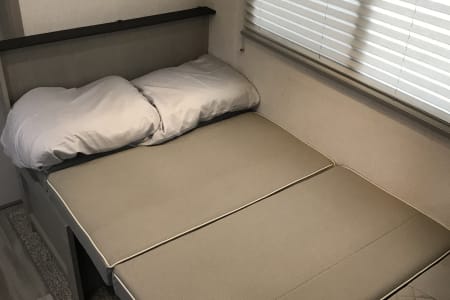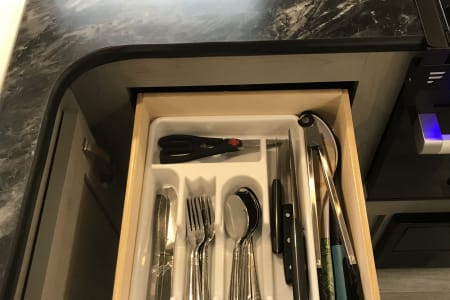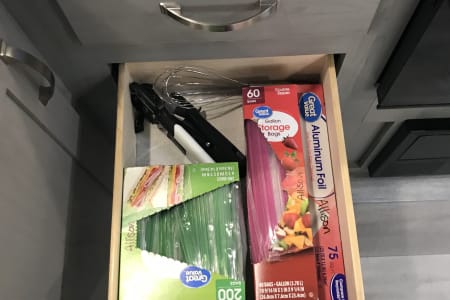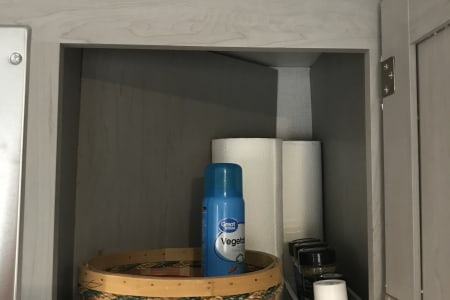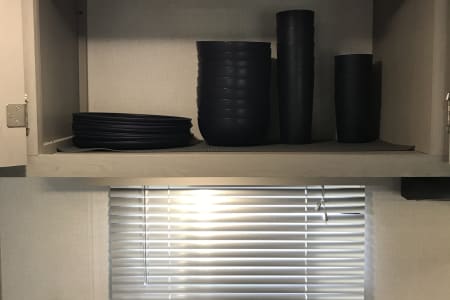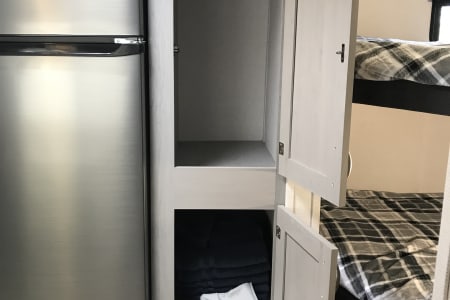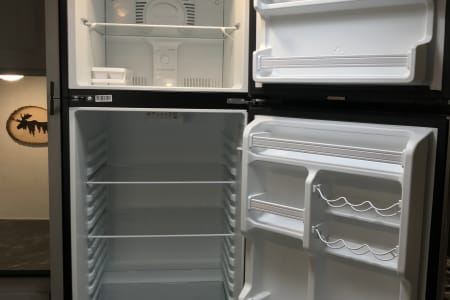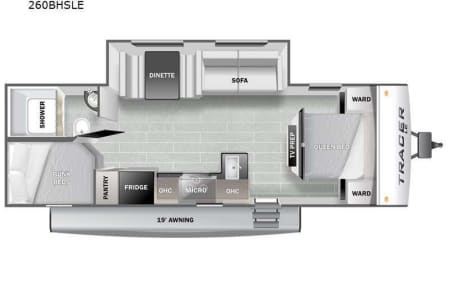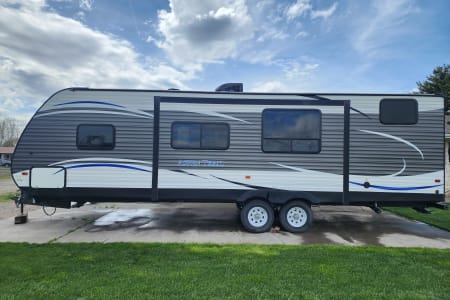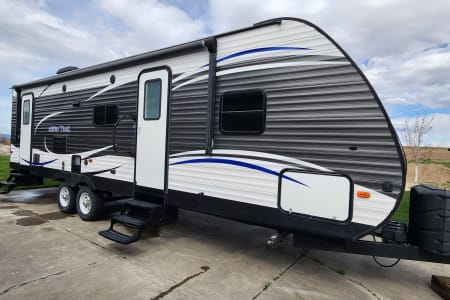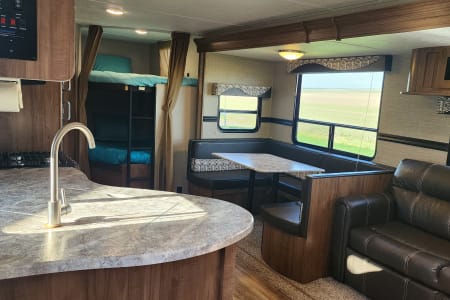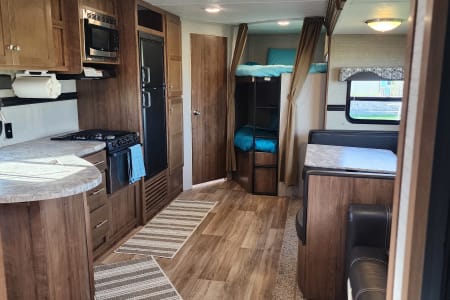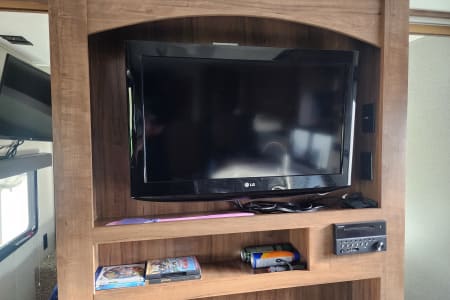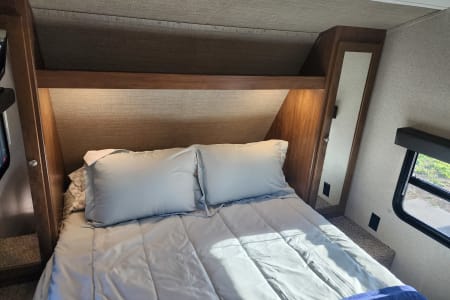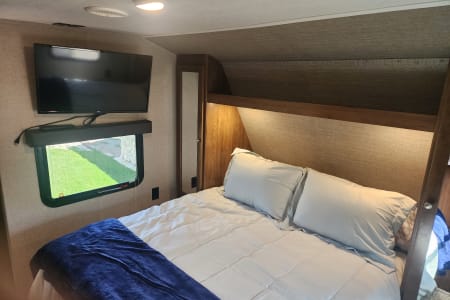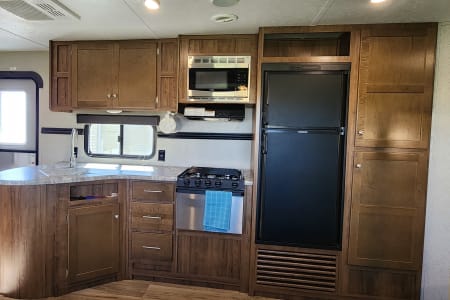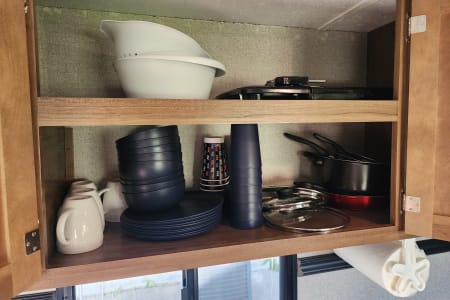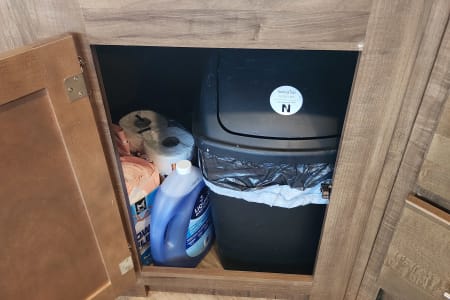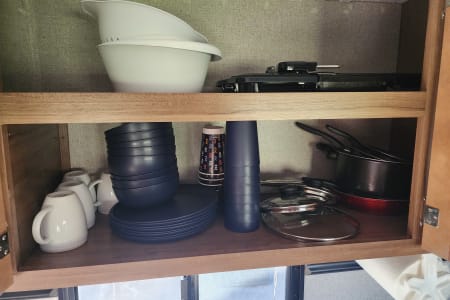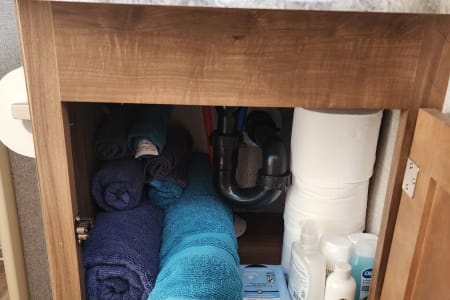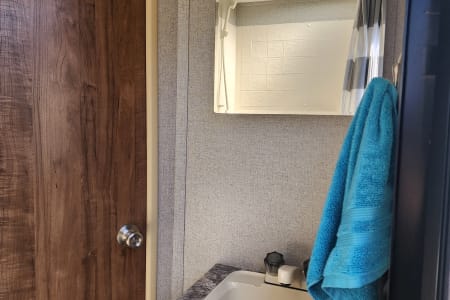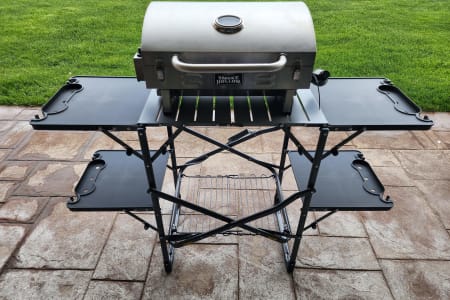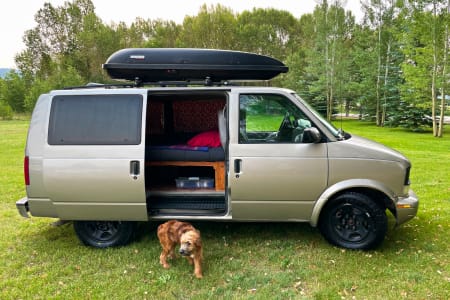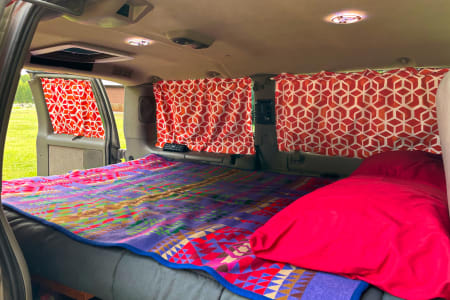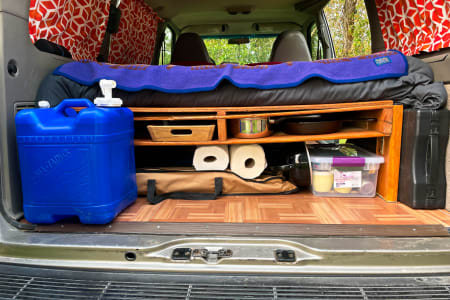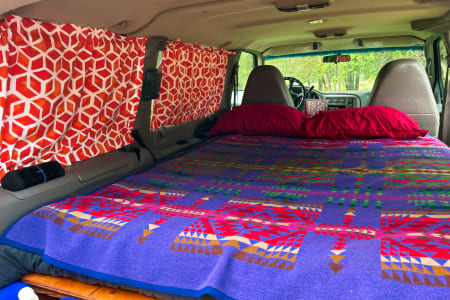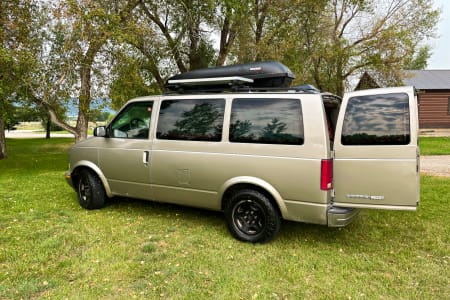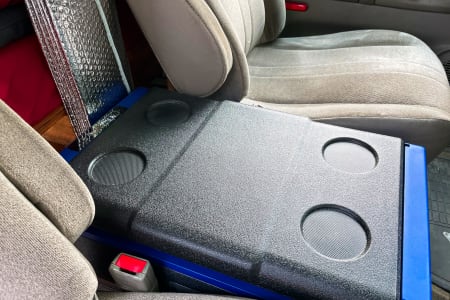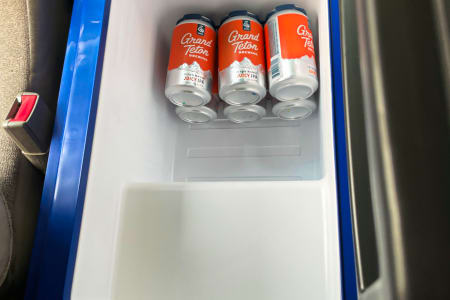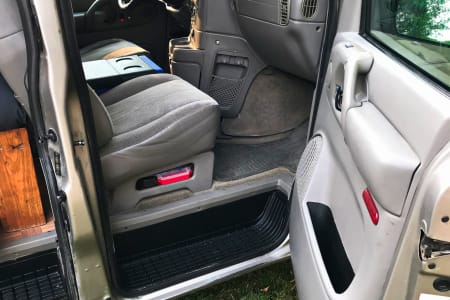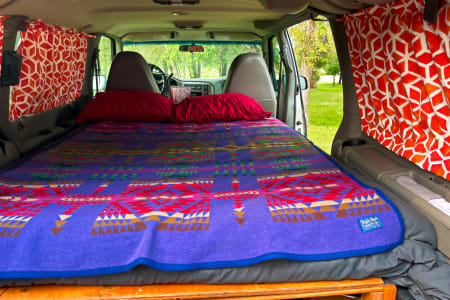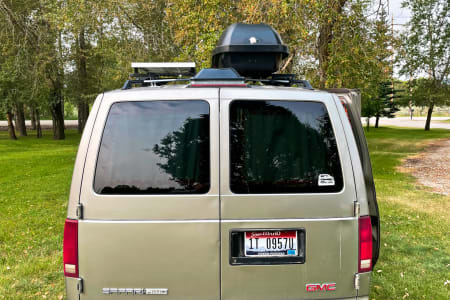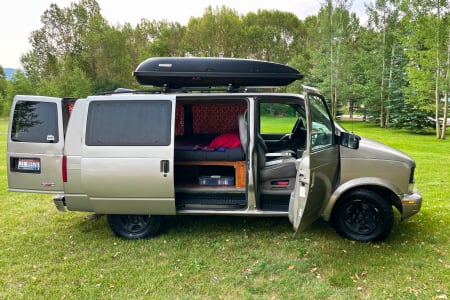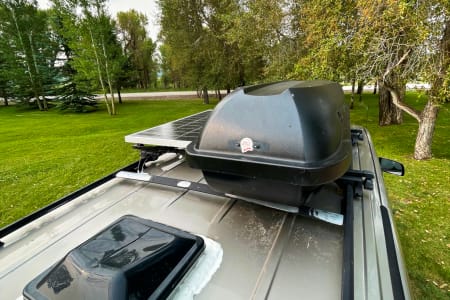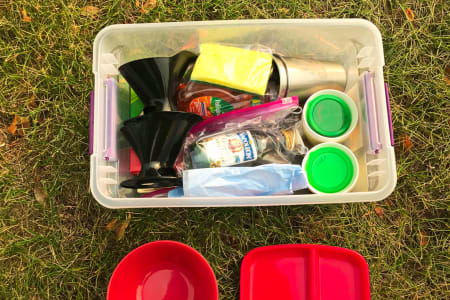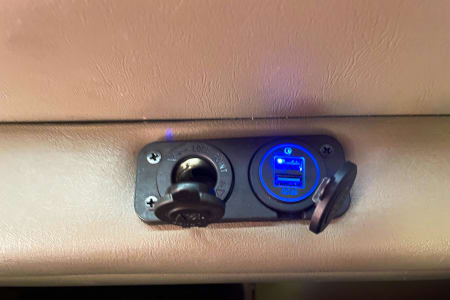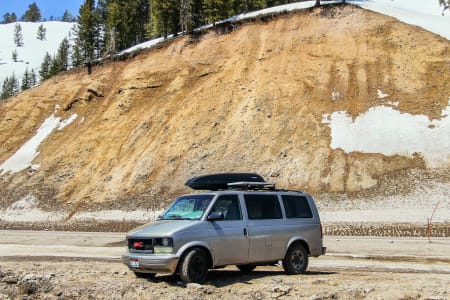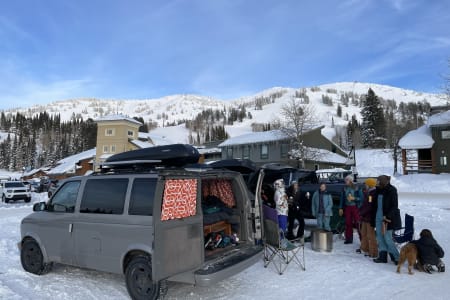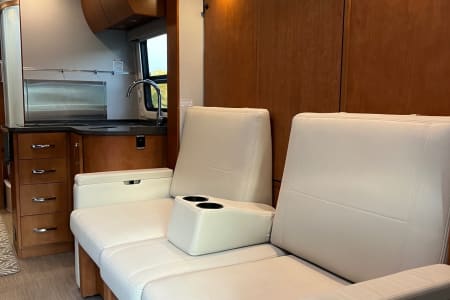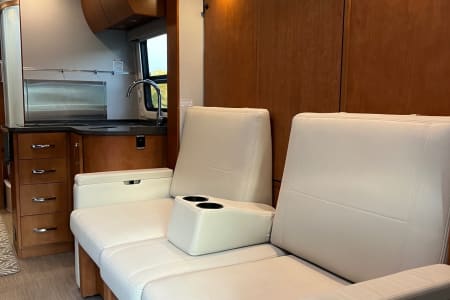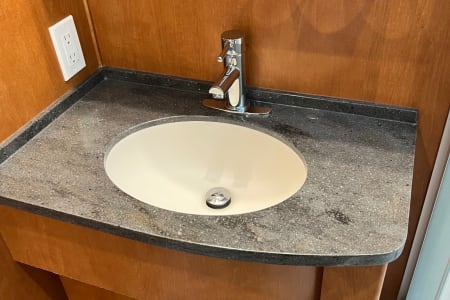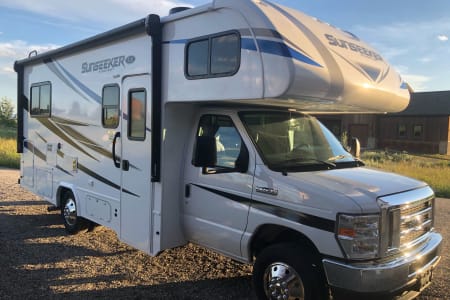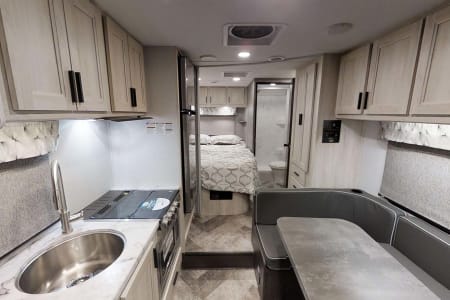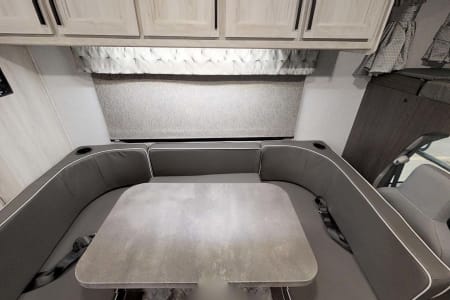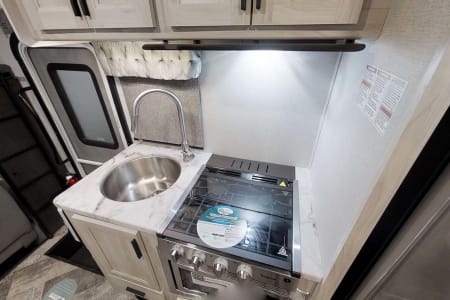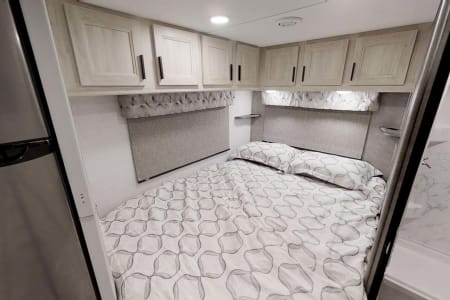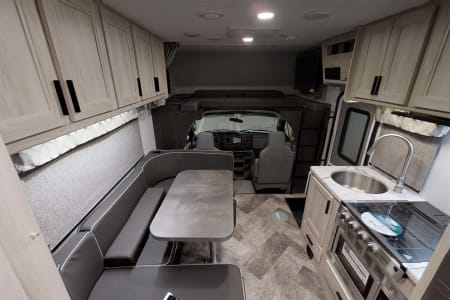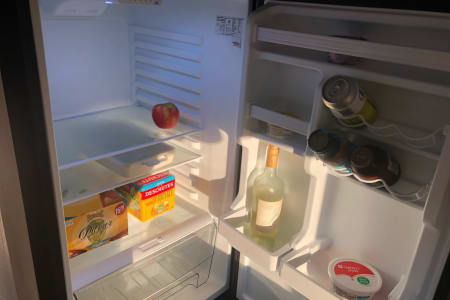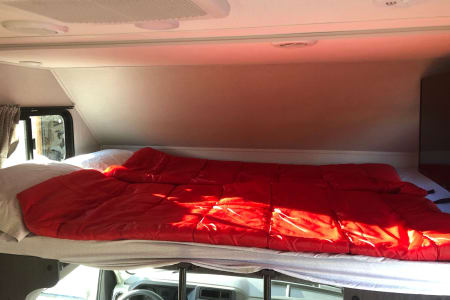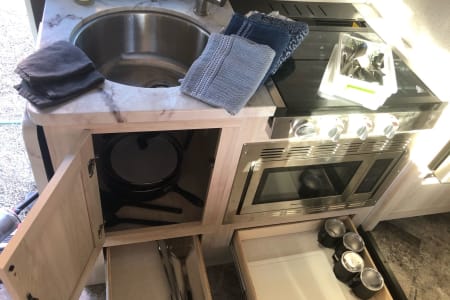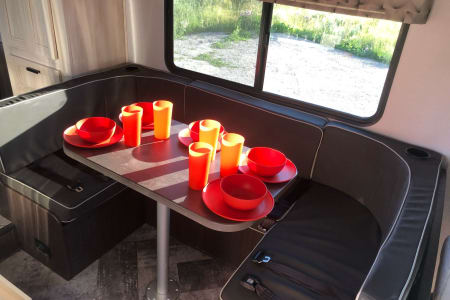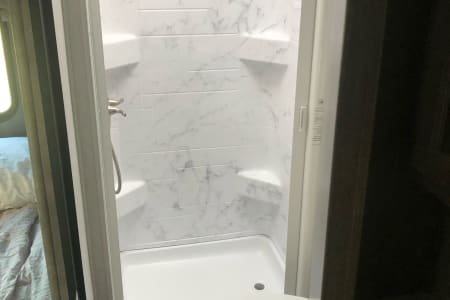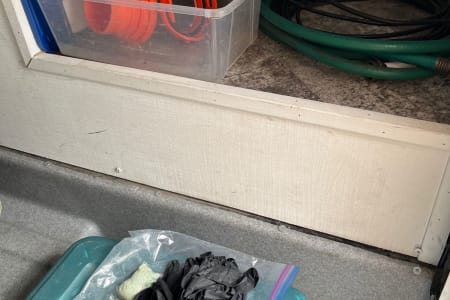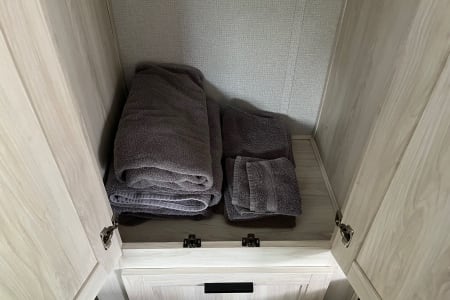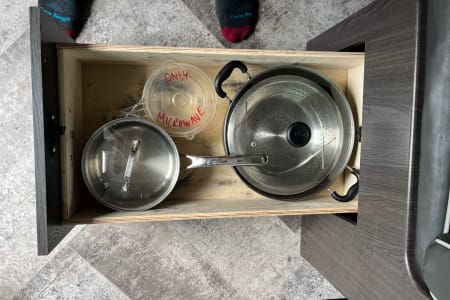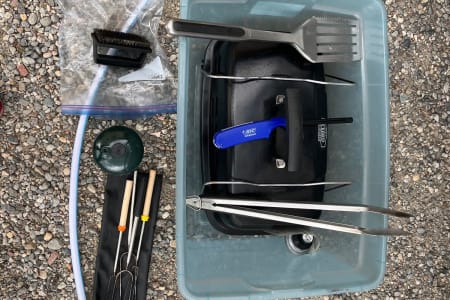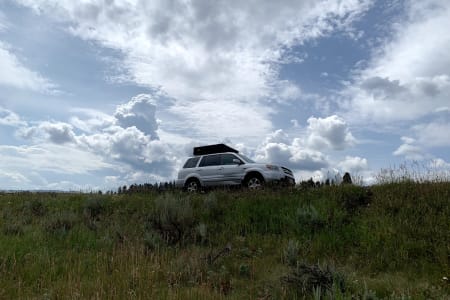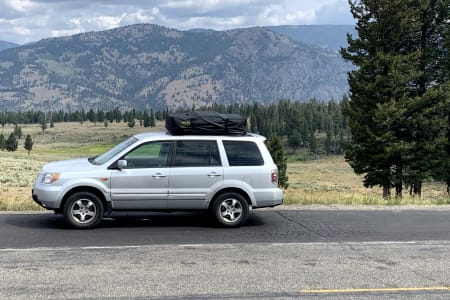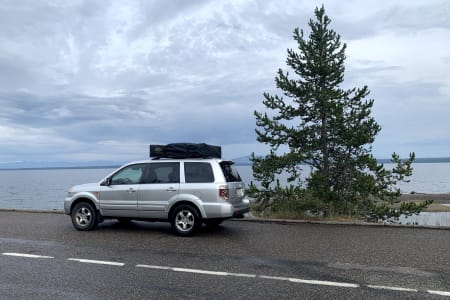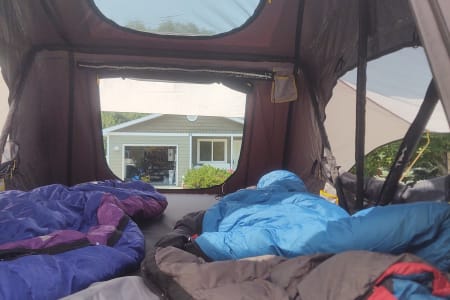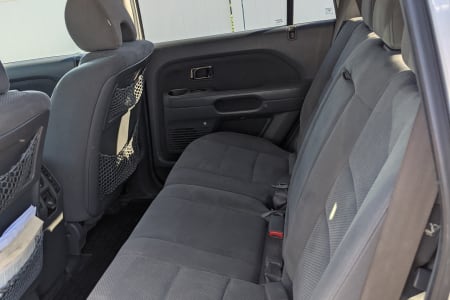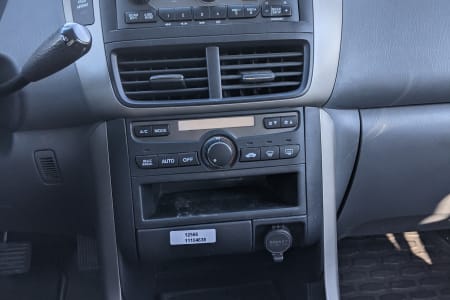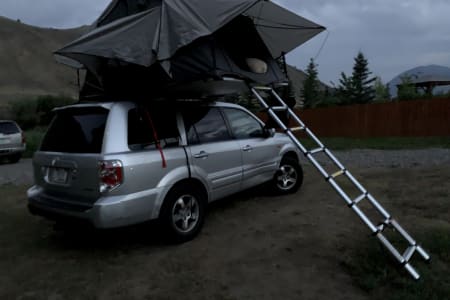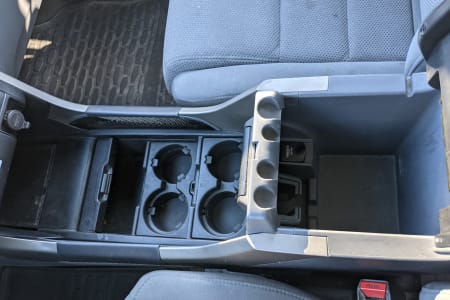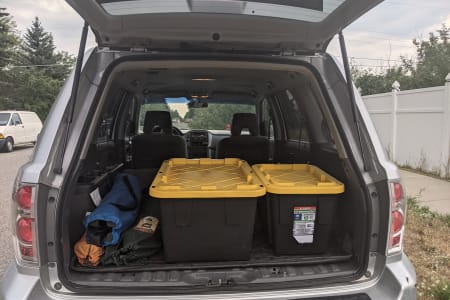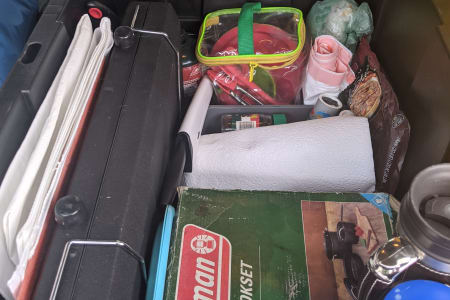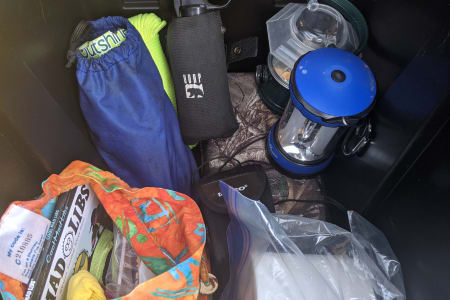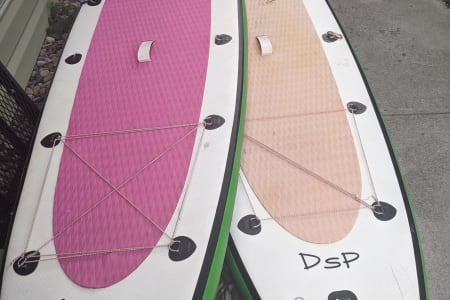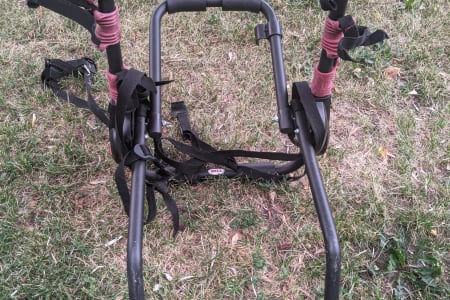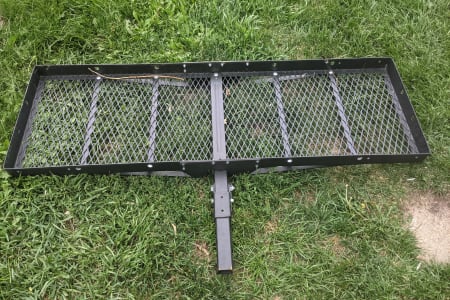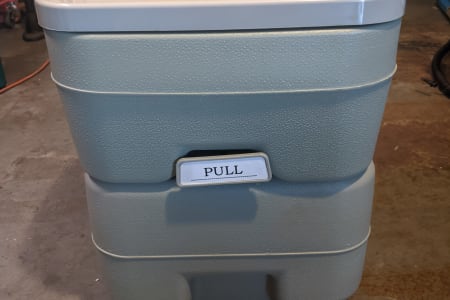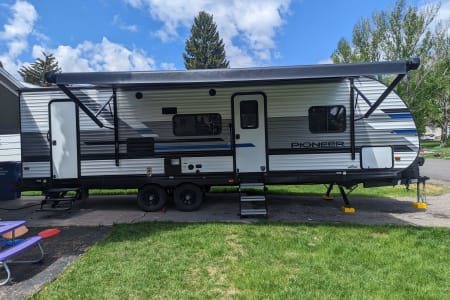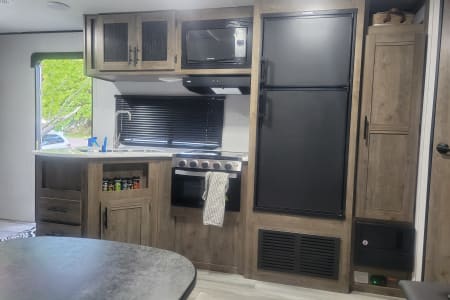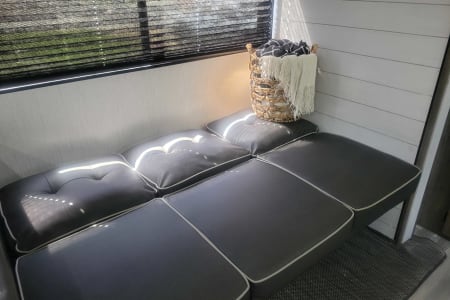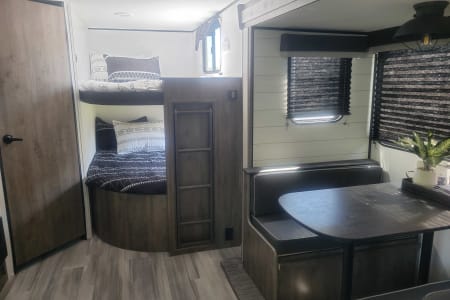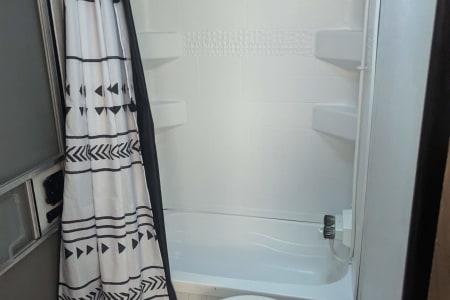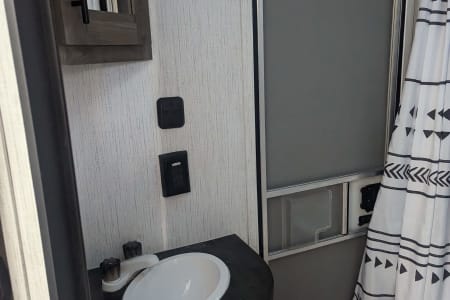Yellowstone National Park Idaho (ID) RV Rentals
RV Rentals Dates
Home / National & State Park Guides / National Park / Yellowstone National Park
Looking for RV rentals, camper van rentals or travel trailer rentals near Yellowstone National Park?
Introduction
Yellowstone National Park is a dream destination for RV campers and nature enthusiasts alike. With its breathtaking landscapes, rich history, and unique geothermal features, it’s no wonder that millions of visitors flock to this iconic park every year. Let’s dive into what makes Yellowstone National Park such a fantastic spot for RV camping, its cultural significance, natural occurrences, weather, precautions, and the activities that RV renters can enjoy. RV camping at Yellowstone National Park offers the perfect blend of convenience and immersion in nature. The park boasts several campgrounds equipped with RV hookups and facilities, allowing visitors to enjoy the comforts of home while being surrounded by the park’s natural wonders. Imagine waking up to the sound of birds chirping and stepping outside your RV to witness the steam rising from geysers in the distance – it’s an experience like no other. RVThereYet is an RV rental company, offering a diverse fleet of motorhomes, including Class A, Class B, and Class C Rentals, Travel, Trailers, and Motorhomes for unforgettable adventures in scenic RV parks and campsites in Yellowstone National Park. Ensure early reservations for camper rentals at Yellowstone National Park.
RV Rentals in Yellowstone National Park
2021 Grand Design Imag...
- 2021
- Travel trailer
- 21 feet
- West Yellowstone MT
- Sleeps 6
- 5 (13)
$209 / Night
Coupon Code: RVTHEREYET - 10% Off
Coupon Code: RVTHEREYET - 10% Off
Coupon Code: RVTHEREYET - 10% Off
Coupon Code: RVTHEREYET - 10% Off
Coupon Code: RVTHEREYET - 10% Off
Coupon Code: RVTHEREYET - 10% Off
Coupon Code: RVTHEREYET - 10% Off
Coupon Code: RVTHEREYET - 10% Off
Transportation
-
Driving/Transportation
When visiting Yellowstone National Park private vehicle travel is the most convenient way to explore the park’s vast landscapes. Visitors can access the park from five different entrances North Northeast East South and West. Each entrance provides unique scenic routes and access to different areas of the park. However it’s important to note that there are restrictions on rig sizes within the park. Vehicles and trailers longer than 40 feet and RVs with a combined length (including tow vehicle) exceeding 60 feet are prohibited on many park roads. So it’s essential to plan your route and check the restrictions before embarking on your Yellowstone adventure.
-
Parking area
Yellowstone National Park offers designated RV parking areas throughout the park making it convenient for RV travelers to explore its wonders. These parking areas are typically located near visitor centers popular attractions and trailheads. However overnight parking for RVs outside of designated campsites is not permitted within the park. It is highly recommended to camp with an RV in the park’s designated campgrounds and utilize alternative transportation methods such as shuttle buses or bicycles to explore the park and minimize traffic congestion.
-
Public Transportation
Yellowstone National Park offers a convenient shuttle bus system that operates during the summer season. The shuttle buses provide transportation to popular attractions and key areas within the park allowing visitors to explore without the need for their own vehicles. Additionally there are well-maintained walking paths throughout the park offering a scenic and eco-friendly way to navigate the park’s stunning landscapes. These options make it easy for visitors to experience Yellowstone’s wonders while minimizing their impact on the environment.
Top Campsites in Yellowstone National Park
-
Reservations camping
Please note that all of these campsites require reservations and it is recommended to book well in advance especially during the peak summer season. Each campground offers a unique experience and easy access to the wonders of Yellowstone National Park ensuring an unforgettable camping adventure.Yellowstone Grizzly RV Park (West Yellowstone Montana)
Located just a few minutes away from the West Entrance of Yellowstone National Park Yellowstone Grizzly RV Park is a highly sought-after campground. With over 200 spacious sites it offers full hookups picnic tables fire rings and free Wi-Fi. This pet-friendly campground also features laundry facilities a playground and a convenience store. Open from May to October it can accommodate RVs and trailers of all sizes.Fishing Bridge RV Park (Yellowstone National Park Wyoming)
Situated in the heart of Yellowstone National Park Fishing Bridge RV Park is a popular choice for visitors. It offers 340 sites with full hookups as well as a general store laundry facilities and a dump station. While it does not have fire rings or picnic tables it provides easy access to the park’s scenic wonders. Fishing Bridge RV Park is open from May to September and welcomes RVs and trailers up to 40 feet in length.Grant Village Campground (Yellowstone National Park Wyoming)
Located near the southwestern shore of Yellowstone Lake Grant Village Campground is a picturesque spot for camping. It offers over 400 sites some with full hookups and others with just electric hookups. The campground provides restrooms with flush toilets showers and a laundry facility. Open from mid-June to mid-September it can accommodate RVs and trailers up to 40 feet in length. Please note that there are no fire rings or picnic tables at this campground.Madison Campground (Yellowstone National Park Wyoming)
Nestled near the Madison River Madison Campground is a popular choice for those seeking a tranquil camping experience. With over 280 sites it offers both tent and RV camping. The campground provides restrooms with flush toilets and access to potable water. While there are no hookups there is a dump station available. Madison Campground is open from late April to late October and can accommodate RVs and trailers up to 40 feet in length.
-
First-come first-served
Please note that availability at these first-come-first-served campgrounds can vary especially during peak visitation periods. It is recommended to arrive early in the day to secure a campsite as they are allocated on a first-come-first-served basis. These campgrounds offer a more spontaneous camping experience allowing visitors to immerse themselves in the natural wonders of Yellowstone National Park.Mammoth Campground
Mammoth Campground is a popular first-come-first-served campground located near the north entrance of Yellowstone National Park. It offers approximately 85 campsites and is open year-round. The campground provides restrooms with flush toilets potable water and access to a dump station. While there are no hookups available RVs and trailers up to 75 feet in combined length can be accommodated. Mammoth Campground is pet-friendly allowing visitors to bring their furry companions along for the adventure.Tower Fall Campground
Situated in the northeastern part of the park Tower Fall Campground offers around 32 first-come-first-served campsites. It is open from late May to early September. The campground provides restrooms with flush toilets and access to potable water. There are no hookups available but RVs and trailers up to 30 feet in length can be accommodated. Tower Fall Campground is pet-friendly allowing visitors to bring their four-legged friends to enjoy the surrounding natural beauty.Indian Creek Campground
Indian Creek Campground is a peaceful first-come-first-served campground located in the southeastern part of Yellowstone National Park. It offers approximately 75 campsites and is open from early June to mid-September. The campground provides vault toilets and access to potable water. There are no hookups available but RVs and trailers up to 35 feet in length can be accommodated. Indian Creek Campground is pet-friendly allowing visitors to explore the park’s trails and scenic vistas with their furry companions by their side.
-
Alternate camping
While the campsites inside Yellowstone National Park may be full these alternative camping options provide RV renters with opportunities to still enjoy the natural wonders and outdoor adventures near the park. Whether opting for private campgrounds national forest campgrounds or backcountry camping there are plenty of options to suit different preferences and camping styles.Private Campgrounds
If the campsites inside Yellowstone National Park are full RV renters can explore private campgrounds located near the park. These campgrounds often offer a range of amenities and services such as full hookups shower facilities laundry services and convenience stores. Some popular private campgrounds near Yellowstone include Yellowstone’s Edge RV Park in Livingston MT and Yellowstone Holiday RV Campground in West Yellowstone MT. These private campgrounds provide a comfortable and convenient base for exploring the park with the added benefit of additional amenities and services.National Forest Campgrounds
Another alternative camping option for RV renters near Yellowstone National Park is to explore the national forest campgrounds in the surrounding areas. Gallatin National Forest and Custer Gallatin National Forest for example offer several campgrounds that cater to RVs and trailers. These campgrounds often provide basic amenities such as vault toilets picnic tables and fire rings. While they may not offer the same level of amenities as the park’s campgrounds they provide a more rustic and secluded camping experience in the beautiful natural surroundings.Backcountry Camping
For those seeking a more adventurous camping experience backcountry camping is an option near Yellowstone National Park. The park offers designated backcountry campsites that can be accessed through hiking or backpacking. These campsites are located in remote areas of the park allowing RV renters to immerse themselves in the wilderness. Permits are required for backcountry camping and it’s essential to follow all regulations and leave no trace principles. Backcountry camping offers a unique opportunity to explore the untouched beauty of Yellowstone’s wilderness away from the crowds and developed campgrounds.
-
General activities
Yellowstone National Park offers an extensive network of hiking trails catering to all skill levels. From easy strolls to challenging hikes there’s something for everyone. One popular trail is the Uncle Tom’s Trail which descends into the Grand Canyon of the Yellowstone providing breathtaking views of the Lower Falls. The trailhead is located near the Canyon Visitor Education Center. Yellowstone is renowned for its diverse wildlife population. RV campers can embark on wildlife viewing excursions to spot iconic species like bison elk wolves and bears. The Lamar Valley often referred to as the “Serengeti of North America ” is a prime location for wildlife sightings. Visitors can drive along the Lamar Valley Road or join guided wildlife tours to maximize their chances of spotting these magnificent creatures. Fishing enthusiasts will find ample opportunities to cast their lines in Yellowstone’s pristine lakes rivers and streams. The Yellowstone River Madison River and Yellowstone Lake are popular fishing spots. Anglers can expect to catch species such as trout salmon and grayling. It’s important to obtain the necessary fishing licenses and adhere to fishing regulations to ensure the preservation of the park’s delicate ecosystem. Exploring Yellowstone on two wheels is a thrilling experience. Cyclists can pedal along paved roads or designated bike paths taking in the park’s stunning landscapes. The Old Faithful to West Thumb route is a scenic option offering views of geysers hot springs and Yellowstone Lake. Cyclists should be mindful of traffic and follow park regulations regarding cycling routes and safety. Yellowstone’s geothermal features are a major draw for RV campers. The park is home to over 10 000 geothermal features including the iconic Old Faithful geyser. Visitors can witness the spectacular eruptions of geysers marvel at colorful hot springs like the Grand Prismatic Spring and explore the otherworldly landscapes of the Norris Geyser Basin and the Mammoth Hot Springs. These geothermal wonders showcase the park’s unique geological activity and provide a captivating experience for outdoor enthusiasts. These activities attract outdoorsy RV campers to Yellowstone National Park offering a chance to immerse themselves in the park’s natural beauty witness incredible wildlife and partake in thrilling outdoor adventures.Hiking
Wildlife Viewing
Fishing
Cycling
Geothermal Features
-
Alternative activities
Yellowstone National Park is a sightseer’s paradise offering breathtaking vistas and natural wonders at every turn. One must-visit landmark is the Grand Canyon of the Yellowstone a magnificent canyon carved by the Yellowstone River. Visitors can admire the colorful canyon walls and the thundering waterfalls such as the Upper and Lower Falls. The Artist Point lookout provides a stunning panoramic view of the canyon and is a favorite spot for capturing Instagram-worthy photos. For RV campers who prefer a more relaxed outdoor experience wildlife photography is a popular activity in Yellowstone. The park is teeming with diverse wildlife including bison elk wolves and bears providing ample opportunities for capturing stunning wildlife shots. Lamar Valley and Hayden Valley are known for their abundant wildlife populations making them excellent locations for nature photographers seeking that perfect shot. Yellowstone National Park offers an extensive network of scenic roads allowing RV campers to explore the park’s beauty from the comfort of their vehicles. The Grand Loop Road which encircles the park provides access to numerous iconic landmarks including geysers hot springs and waterfalls. The drive along the Yellowstone Lake Loop offers stunning lake views while the Beartooth Highway just outside the park is renowned for its breathtaking mountain vistas. Yellowstone’s geothermal features are not only a sight to behold but also offer unique photo opportunities. The Upper Geyser Basin home to the famous Old Faithful geyser showcases a mesmerizing display of erupting geysers. The Grand Prismatic Spring located in the Midway Geyser Basin is the park’s largest hot spring and boasts vibrant colors that make for stunning photographs. Visitors can capture the steam rising from the geothermal features and the vibrant hues of the mineral-rich waters. Witnessing a sunrise or sunset in Yellowstone National Park is a magical experience. The park’s vast landscapes provide the perfect backdrop for capturing the beauty of these daily phenomena. The Hayden Valley and Lamar Valley are popular spots for sunrise and sunset viewing offering unobstructed views of the surrounding mountains and meadows. Be sure to check the park’s sunrise and sunset times and plan your visit accordingly for the best lighting and photo opportunities. These alternative recreational activities in Yellowstone National Park cater to RV campers who prefer a more relaxed and less physically demanding outdoor experience. From capturing stunning photographs of wildlife and geothermal features to enjoying scenic drives and witnessing the park’s natural beauty during sunrise and sunset there are plenty of options to create lasting memories and capture Instagram-worthy moments.Sightseeing
Wildlife Photography
Scenic Drives
Geysers and Hot Springs
Sunrise and Sunset Viewing
Season-specific experiences in Yellowstone National Park
-
Spring activities
Spring brings a burst of color to Yellowstone National Park as wildflowers bloom across the meadows and hillsides. Take a leisurely hike along the park’s many trails and immerse yourself in a sea of vibrant blossoms. From lupines to Indian paintbrushes the variety of wildflowers is truly breathtaking. Lamar Valley and Hayden Valley are popular areas for wildflower viewing offering picturesque landscapes adorned with a tapestry of colors. No trip to Yellowstone is complete without witnessing the iconic Old Faithful geyser. In spring the geyser erupts against a backdrop of snow-capped mountains creating a stunning contrast. Visitors can enjoy the eruption’s predictability and capture memorable photos of the towering plume of steam. Old Faithful is located in the Upper Geyser Basin accessible via the Grand Loop Road. For history enthusiasts a visit to the Historic Fort Yellowstone in Mammoth Hot Springs is a must. This former military post played a crucial role in the early years of the park and now serves as the park’s administrative center. Explore the historic buildings including the museum and learn about the park’s fascinating past. The fort is located near the North Entrance of the park. The Boiling River is a unique natural hot spring located near the park’s North Entrance. In spring when the temperatures are still cool it offers a soothing and rejuvenating experience. Visitors can soak in the warm waters where the hot spring mixes with the Gardner River. It’s a popular spot for relaxation and a refreshing dip after a day of exploring. The Boiling River is accessible via a short hike from the parking area. Spring is a time of migration for many wildlife species in Yellowstone National Park. RV campers can witness the awe-inspiring sight of herds of elk bison and pronghorn making their way to their summer grazing grounds. The Lamar Valley and Hayden Valley are excellent locations for wildlife viewing during the migration season. Visitors can observe these majestic animals in their natural habitat and capture remarkable photographs. These recreational activities and landmarks in Yellowstone National Park during the spring season provide RV campers with a range of experiences from enjoying the vibrant wildflowers and witnessing the eruption of Old Faithful to exploring the park’s history at Fort Yellowstone and immersing themselves in the park’s natural hot springs and wildlife migration.Wildflower Viewing
Old Faithful
Historic Fort Yellowstone
Boiling River
Wildlife Migration
-
Summer activities
Summer is the perfect time to visit the iconic Grand Prismatic Spring the largest hot spring in Yellowstone National Park. Its vibrant colors are most vivid during this season creating a mesmerizing sight. Visitors can take a short walk along the boardwalks surrounding the spring and capture stunning photos of the rainbow-like hues. The Grand Prismatic Spring is located in the Midway Geyser Basin accessible via the park’s Grand Loop Road. Summer is a prime season for wildlife watching in Yellowstone. RV campers can spot a variety of animals including grizzly bears black bears wolves and herds of bison and elk. The Lamar Valley and Hayden Valley are renowned for their wildlife populations offering opportunities to witness these majestic creatures in their natural habitat. Visitors should always maintain a safe distance and observe wildlife from a respectful distance. With its sparkling blue waters and picturesque surroundings Yellowstone Lake is a popular summer destination in the park. RV campers can enjoy a range of activities such as boating kayaking and fishing. The lake is home to several species of fish including trout and salmon providing ample opportunities for anglers. Visitors can also relax on the lake’s shores take scenic hikes along its trails or simply admire the serene beauty of this natural gem. A visit to the historic Old Faithful Inn is a must during the summer season. This grand log lodge built in 1904 is a National Historic Landmark and an architectural marvel. RV campers can explore the inn’s rustic charm marvel at its towering lobby and enjoy a meal or refreshments in its dining room or lounge. The Old Faithful Inn is located near the Old Faithful geyser in the Upper Geyser Basin. Summer is an ideal time to explore the park’s numerous geyser basins. RV campers can witness the eruptions of famous geysers like Old Faithful and Castle Geyser as well as explore lesser-known basins like Norris Geyser Basin and Upper Geyser Basin. The boardwalks provide safe access to these geothermal wonders allowing visitors to observe the bubbling hot springs roaring geysers and vibrant microbial mats that thrive in this unique ecosystem. These summer activities and landmarks in Yellowstone National Park offer RV campers a chance to witness the park’s stunning natural features encounter diverse wildlife immerse themselves in the park’s history and enjoy the recreational opportunities provided by Yellowstone Lake. It’s a season of adventure beauty and unforgettable experiences in this remarkable national park.Grand Prismatic Spring
Wildlife Watching
Yellowstone Lake
Old Faithful Inn
Geyser Basin Exploration
-
Fall activities
Fall is a magical time to witness the vibrant colors of the changing leaves in Yellowstone National Park. RV campers can take scenic drives along the park’s roads such as the Grand Loop Road or the Lamar Valley Road to marvel at the stunning autumn foliage. The park’s diverse tree species including aspen cottonwood and willow create a breathtaking display of reds oranges and yellows against the backdrop of the park’s majestic landscapes. Fall marks the rutting season for many wildlife species in Yellowstone. RV campers can witness the thrilling displays of courtship and dominance as animals like elk and bighorn sheep engage in dramatic mating rituals. The Mammoth Hot Springs area and the Lamar Valley are popular locations for observing these fascinating behaviors. Visitors should keep a safe distance and observe wildlife from designated viewing areas. Fall offers cooler temperatures and fewer crowds making it an ideal time for hiking and backpacking adventures in Yellowstone. RV campers can explore the park’s extensive trail system enjoying the peacefulness of the autumn season. Trails like the Mount Washburn Trail and the Fairy Falls Trail provide opportunities to witness the fall colors and breathtaking vistas. It’s important to be prepared for changing weather conditions and to check trail conditions before embarking on hikes. Fall’s golden light and vibrant colors create a photographer’s paradise in Yellowstone National Park. RV campers can capture stunning images of the park’s landscapes wildlife and geothermal features. The Lamar Valley and the Grand Canyon of the Yellowstone are particularly scenic locations for fall photography. Sunrise and sunset offer ideal lighting conditions for capturing the park’s beauty while misty mornings and foggy valleys add an ethereal touch to photographs. Fall is considered the shoulder season in Yellowstone meaning fewer visitors compared to the summer months. RV campers can take advantage of this quieter time to explore the park at a more relaxed pace without the crowds. It allows for a more peaceful and intimate experience where visitors can truly connect with the park’s natural wonders and enjoy the serenity of the fall season. These fall activities and landmarks in Yellowstone National Park offer RV campers a chance to witness the stunning fall foliage observe wildlife during the rutting season embark on scenic hikes capture breathtaking photographs and enjoy the tranquility of the park during the quieter shoulder season. It’s a time of natural beauty and a unique opportunity to experience Yellowstone in a different light.Fall Foliage
Wildlife Rutting Season
Hiking and Backpacking
Photography
Lower Visitor Numbers
-
Winter activities
Cross-Country Skiing and Snowshoeing
Winter transforms Yellowstone National Park into a snowy wonderland offering RV campers the opportunity to explore the park’s trails through cross-country skiing or snowshoeing. The park’s groomed trails such as the Riverside Trail near Mammoth Hot Springs provide a serene and picturesque setting for winter adventures. RV campers can glide through snow-covered landscapes marvel at frozen waterfalls and observe wildlife tracks in the pristine snow.
Wildlife Watching
Winter is an exceptional time for wildlife watching in Yellowstone. RV campers can spot animals like bison elk and wolves against the snowy backdrop as they forage for food and navigate the winter landscape. The Lamar Valley and Hayden Valley are popular locations for wildlife sightings during the winter months. Visitors should be patient and observant as animals may be more elusive in the winter.
Snowcoach Tours
Snowcoach tours offer a unique way to explore Yellowstone’s winter beauty. These specialized vehicles with oversized tires or tracks provide comfortable transportation over the snowy terrain allowing RV campers to access remote areas of the park. Guided snowcoach tours offer opportunities to witness geothermal features wildlife and stunning winter landscapes while learning about the park’s ecology and history.
Ice Fishing
Yellowstone Lake freezes over in winter providing a unique opportunity for ice fishing. RV campers can drill a hole in the ice and try their hand at catching trout or other fish species. It’s important to check ice conditions and obtain the necessary fishing licenses before attempting ice fishing. The park offers a serene and tranquil setting for this winter activity allowing anglers to enjoy the solitude and beauty of the frozen lake.
Winter Photography
Winter in Yellowstone offers breathtaking photo opportunities. RV campers can capture the park’s snow-covered landscapes frost-covered trees and steam rising from geothermal features. The contrasting colors of the geothermal pools against the white snow create striking compositions. Sunrise and sunset provide soft and warm lighting enhancing the winter beauty of the park. Photographers should dress warmly and protect their equipment from the cold weather.
These winter activities and landmarks in Yellowstone National Park offer RV campers a chance to experience the park’s serene beauty witness wildlife in a unique setting explore the snowy landscapes through various winter activities and capture stunning photographs. It’s a season of tranquility and a chance to discover a different side of Yellowstone’s natural wonders.












